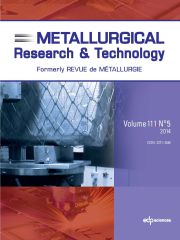Article contents
Shipping containers in a sustainable city
Published online by Cambridge University Press: 13 March 2013
Abstract
The challenges of sustainable urban development are tremendous. More than half of the earth’s population lives in cities and there is an upward trend. On a global scale, the cities are the greatest greenhouse gas producers and the biggest consumers of water and energy. Urbanisation, climate change and demographic change are forcing metropolises to make their infrastructure more efficient, be environmentally friendlier, keep the high standard of living and if possible save costs. One of the keys is the selection of materials. Buildings are responsible for 40% of the energy consumption and approx. 21% of produced CO2 worldwide. Scientists and researchers from all over the world are looking into new technologies, so that energy could be used efficiently and CO2 emissions reduced, without having to pass on comfort or “lifestyle habits” [http://www.siemens.de/nachhaltige-stadtentwicklung/nachhaltige-stadtentwicklung.html?stc=deccc020187 (accessed 27.04.2012)]. Sustainability is a complex term, used in the last 2–3 decades. It involves more than just the environment and it concerns every one of mankind [cf. Schlussbericht der Enquete-Kommission Globalisierung der Weltwirtschaft – Herausfordeung-en und Antworten, Drucksache 14/9200, http://dipbt.bundestag.de/dip21/btd/14/092/1409200.pdf, p. 393]. This is why social and engineering scientists from RWTH Aachen University have joined in their efforts to figure out how used shipping containers, which are in abundant supply, can play their role in the future of sustainable construction. After they have been used several times, freight containers are considered disused and begin to accumulate in the surroundings of seaports and harbours. The energy to produce a container is significant and considered wasted if the steel box has completed only a few runs. The first association with containers can be a cold and uncomfortable cell, however, after a glance at the properly adapted shipping containers, converted into cosy, pretty and affordable habitable spaces, this preconception can soon be dismissed. Research has shown, in terms of environment and design, they are innovative and intelligent – building with cargo containers is cheaper, “greener”, faster and more flexible than traditional methods. With the increase of life expectancy and population continuing to grow, demand for housing will rise as well. Demographic change and the demand will contribute to rising construction prices. Habitation is one of the essential basic needs of all people. If one takes into account population growth and the timely provision of housing for all people, existing construction methods have to be adapted and new ones developed. Space in the social sense is an expression of the society and not its reflexion [cf. M. Castells, The Rise of Network Society, Wiley-Blackwell, 2010, p. 440f]. Bearing in mind the diversity in Europe’s population and the anxiety for environmental protection and sustainability, also the contrariness in environmental awareness and behavior, likewise eco-friendly and polluting habits in our everyday life, which are linked together in a various and unconsidered way, validates having different levels of environmental awareness depending on the different segments of society. We speak here of the “patchwork” – character of lifestyles and values, which is illustrated and explained easily with the Sinus-Milieu-Model [Bundesministerium für Umwelt, Naturschutz und Reaktorsicherheit, Umweltbewusstsein in Deutschland 2010, Ergebnisse einer repräsentativen Bevölkerungsumfrage, 2010, p. 13]. This paper discusses the existing Sinus-Milieus® [http://www.sinus-institut.de/en/ (accessed 27.04.2012)] and their features and show hereupon the growing demand in the society on flexible living concepts and habitat designs. The theory supports, that building with steel containers could be a real solution for the social and environmental problems. A continuously availability of shippingcontainers as a building block is expected and therefore the construction business with steel containers has a great potential in terms of sustainability towards a sustainable construction in a sustainable city.
Information
- Type
- Research Article
- Information
- Metallurgical Research & Technology , Volume 110 , Issue 1: Social Value of Materials , 2013 , pp. 55 - 63
- Copyright
- © EDP Sciences 2013
References
- 1
- Cited by

